Demystifying Advantage Play: The Math That Drives Profitable Blackjack
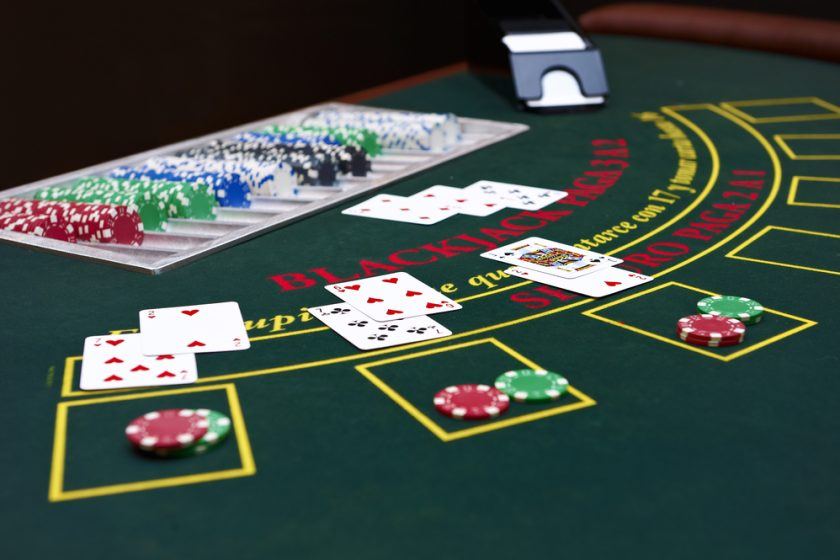
Essential Components of Advantage Play in Blackjack
Successful advantage play in blackjack is anchored in a precise combination of mathematical insight and disciplined decision-making. Here are the core elements that set skilled players apart:
- **Calculated Decisions**: The heart of advantage play lies in making the mathematically optimal choices-knowing exactly when to hit, stand, split, or double-based on real-time probabilities.
- **Consistent Discipline**: Maintaining unwavering adherence to strategic rules and resisting emotional or impulsive moves is fundamental to long-term success.
- **Deep Knowledge Base**: A thorough grasp of blackjack rules, card probability, and edge-gaining strategies such as card counting underpins every successful approach.
- **Maximizing Player Edge**: By leveraging advantage techniques, savvy players can tilt the odds in their favor, challenging the casino’s inherent house edge.
- **Ongoing Practice & Learning**: Staying current with evolving strategies, rule changes, and incorporating feedback contributes to a player’s sustained advantage.
Defining Advantage Play in Blackjack
Advantage play in blackjack refers to a set of data-driven guidelines and tactics, including optimal actions (such as splitting and doubling down), strategic betting, and a commitment to discipline. When applied correctly-especially under favorable casino or online blackjack rules-these strategies can upgrade blackjack from a negative expectation game (house-favored) to one offering the player a long-term positive return.
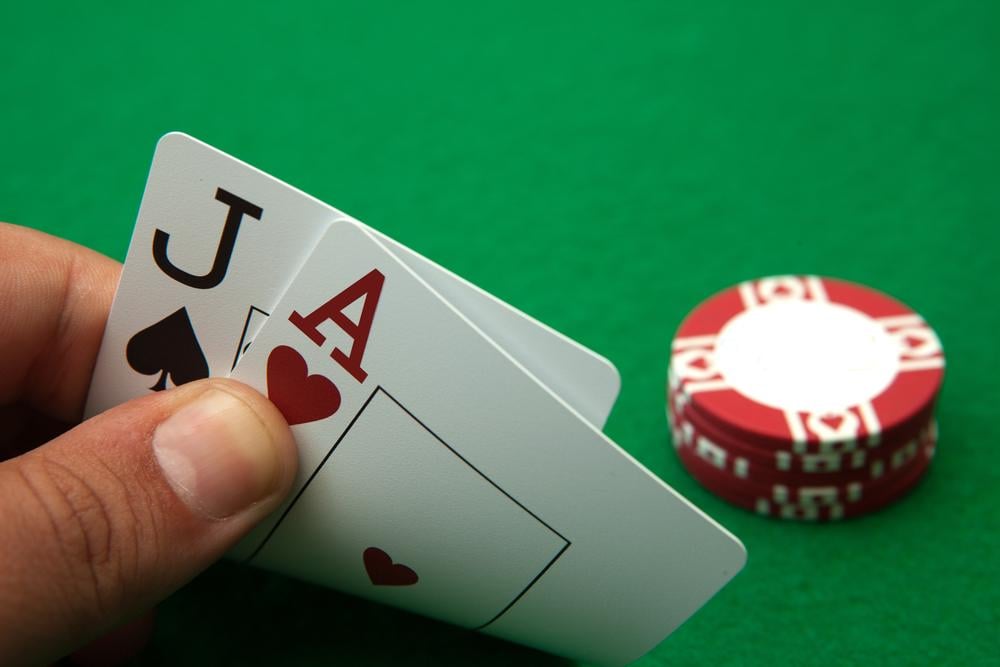
Image credit: StockStudio Aerials/Shutterstock
Changing the Odds: From House Edge to Player Edge
Utilizing advantage play techniques can radically shift the balance of probability in blackjack. Standard blackjack, when using perfect basic strategy, generally offers the house a theoretical edge of approximately 0.54%. This positions blackjack as a negative expectation game-where the casino ideally profits over time.
However, with carefully executed advantage play-incorporating advanced counting and optimal bet sizing-players can transform the game into one favoring the player, with positive expectation percentages reaching up to +1.7% in exceptionally favorable situations. These figures fluctuate depending on skill, game rules, and the number of decks, but the core idea remains: it’s possible for disciplined, knowledgeable players to override the house’s default advantage.
The Mathematical Backbone of Blackjack
Blackjack’s enduring appeal stems from its simple rules and the genuine potential for skillful play to change the game’s outcome. Unlike most casino games, blackjack gives adept players the opportunity to influence results through logical reasoning and a strong command of probability.
Overview of Core Blackjack Rules
In blackjack, each player faces the dealer and aims to form a hand that either beats the dealer’s total or achieves 21 without busting. Players are dealt two cards face up, while the dealer typically shows one card. The major actions that follow-hitting, standing, splitting, and doubling-each have mathematical consequences.
Understanding What Wins a Hand
While landing exactly 21 (blackjack) is ideal, simply outscoring the dealer without exceeding 21 is the practical goal. Every decision-especially those that could risk a bust-is impacted by underlying mathematical probabilities.
Blackjack Probabilities: Calculating Your Winning Chances
Unlike slot machines or roulette, blackjack’s odds are dynamic, shifting based on every card dealt and every decision made by both player and dealer. In single-deck games using flawless basic strategy, the house edge may be as low as 0.54%. This can be influenced by rules such as the number of decks in play and house-specific requirements.
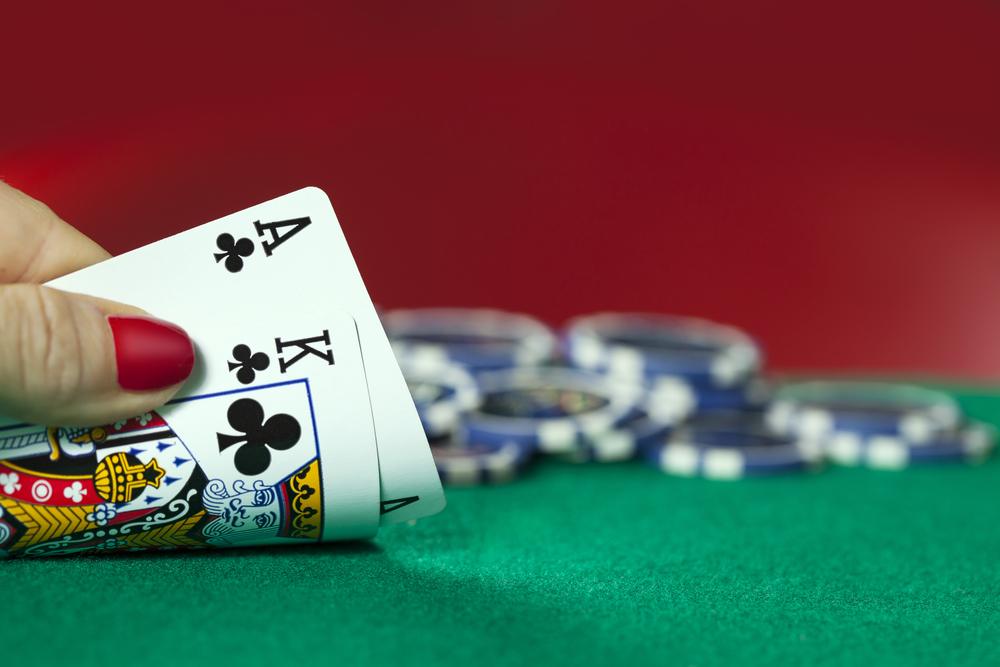
Image credit: Kraevski Vitaly/Shutterstock
Key Probabilities Every Player Should Know
A few foundational probabilities guide most strategic decisions:
- Busting with a total of **12**: about 31% chance
- Improving with a total of **16**: about 69% chance
- Dealer busting when showing **6**: roughly 42% chance
These percentages are not fixed and can shift as cards are played and decks are shuffled, but they illustrate the importance of evidence-backed choices.
The Mechanics of Odds in Blackjack
Every card played alters the deck’s composition and, therefore, the odds of every subsequent hand. Card counting, for instance, is an empowered way to track these shifts; decks rich in tens and aces favor players, while lower-card concentrations benefit the house.
Advanced Strategies: Card Counting and Beyond
Among the most famous mathematical strategies is card counting, which involves assigning values to high, medium, and low cards as they are played. The Hi-Lo system, for example, gives +1 to low cards (2-6), 0 to medium cards (7-9), and -1 to high cards (10-Ace). By keeping a running tally and then dividing by the number of decks left (true count), players can accurately adjust their bets and increase their advantage when the deck becomes favorable.
Navigating Casino Rules: The "17 Rule" and Its Implications
A crucial nuance in blackjack is how the house manages totals. Dealers are required to hit on 16 and stand on 17, but some casinos tweak this by making dealers hit on “soft 17” (Ace + 6), subtly increasing the house edge. Being aware of these distinctions helps strategic players fine-tune their approach.
Strategy Charts: Visual Guides to Optimal Play
Basic strategy charts, developed from millions of simulated hands, distill every possible outcome into the single best response-whether to hit, stand, split, or double-based on the cards on the table. By consistently following these charts, players can minimize the house edge to below 1% in many variations. Advanced practitioners will sometimes deviate from the chart, influenced by factors like the count or table composition.
The Dealer’s Role: How Math Levels the Playing Field
While casino dealers are adept at quickly totaling hands and paying bets, the sophisticated math of advantage play belongs to the player. The most vital piece of data the player can observe is the dealer’s upcard, as this helps estimate the odds of the dealer busting or achieving certain totals. For example, a dealer showing a 6 is at higher risk of busting, which can prompt a more aggressive player strategy.
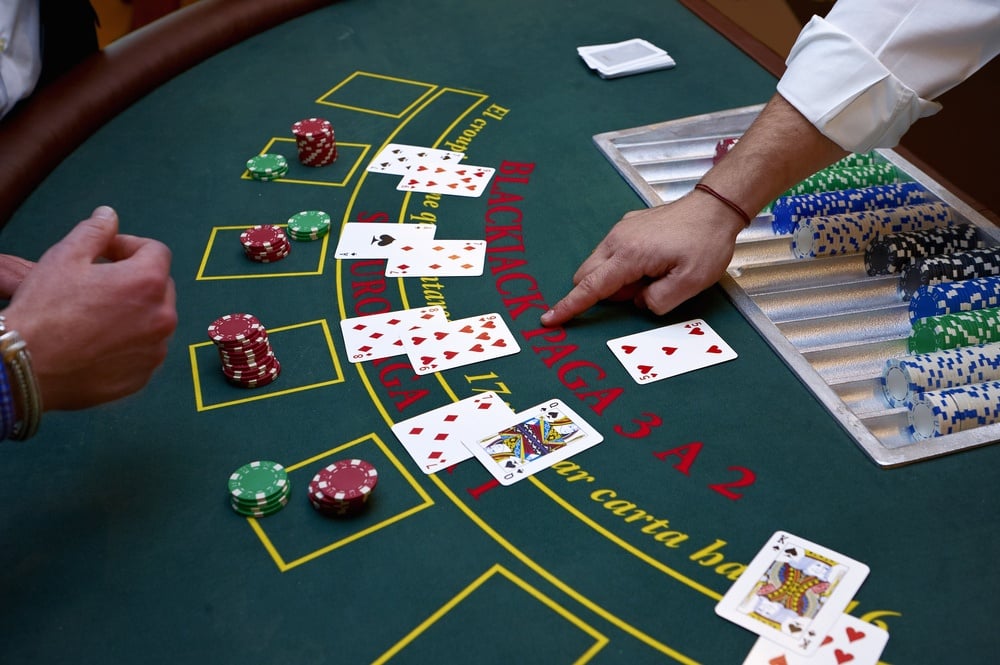
Image credit: Kitreel/Shutterstock
Impact of Multiple Decks on Game Dynamics
To deter card counters, most casinos use multi-deck shoes. This slightly alters probabilities-for example, the odds of being dealt a blackjack decrease from 4.8% in single-deck to 4.7% in six-deck games-and requires adjustments in both basic strategy and advanced counting methods.
Beating the House: Advanced Advantage Play Techniques
Beyond counting, elite advantage players use skills such as:
- **Shuffle tracking**: Monitoring clusters of valuable cards through the shuffle, predicting when they’ll re-enter play
- **Ace sequencing**: Tracking ace placement to predict their upcoming appearance
- **Hole carding**: Gleaning the value of the dealer’s face-down card, exploiting dealer errors
Many casinos now use automatic shufflers and rigorous procedures to neutralize these tactics.
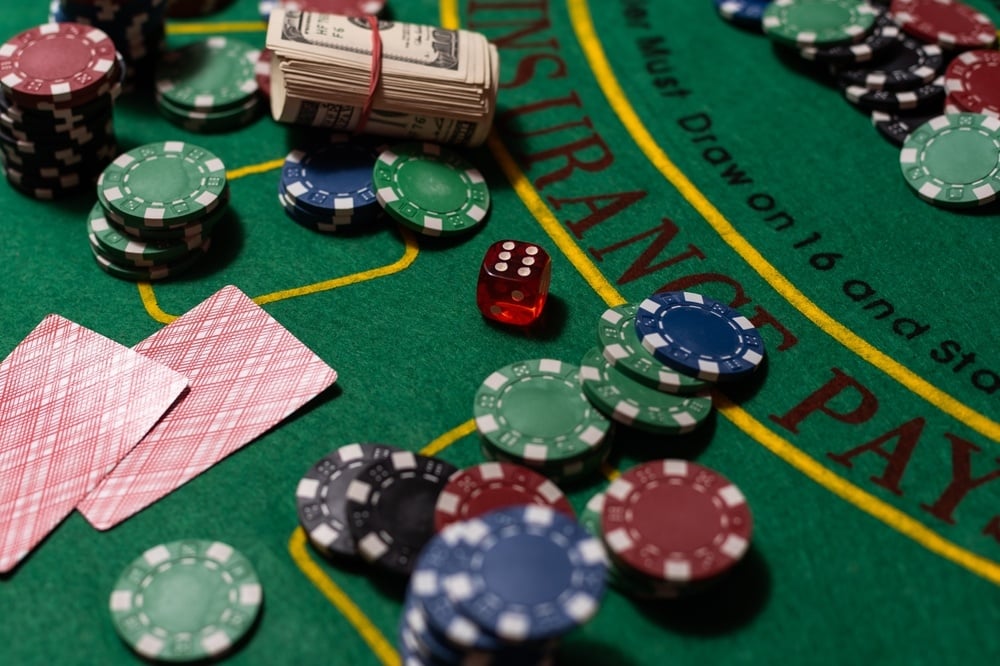
Image credit: Fresnel/Shutterstock
The Myth of Blackjack Streaks
Many players believe in hot or cold streaks. Although each individual hand is an independent event, the shifting composition of the remaining cards (especially in shoe games) can create stretches where outcomes are statistically more or less favorable to the player. Adjusting bet size based on changing odds (“the count”) is a proven response, underpinning many professional strategies.
Leveraging Software and Practice Resources
A vast array of blackjack training tools-ranging from basic strategy simulators to detailed card counting practice platforms-are available online. These resources allow players to refine their skills, experiment with different house rules, and gain confidence in a risk-free environment.
Frequently Asked Questions and Common Misconceptions in Blackjack Math
While complex, there isn’t a magical formula to guarantee consistent wins at blackjack. Rather, a thorough understanding of strategy charts and probability lays the foundation for smarter play.
- **Is card counting illegal?**
No-card counting is not illegal, although casinos maintain the right to refuse service or ban suspected counters. Card counting does not require exceptional memory; most dedicated players can learn effective systems with practice, discipline, and loss management.
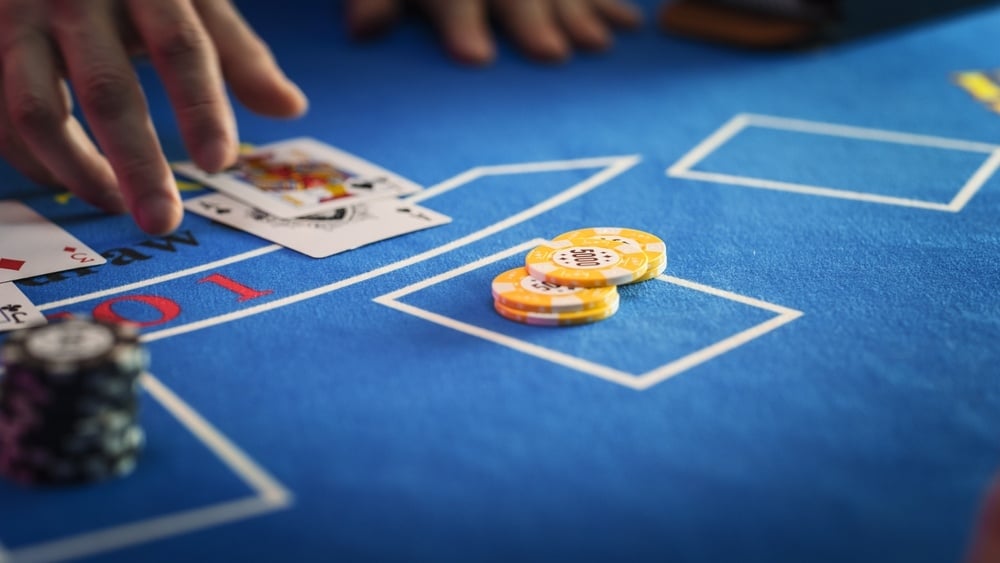
Image credit: Kitreel/Shutterstock
Blackjack Math: Your Questions Answered
Is card counting a guaranteed way to win?
No system guarantees short-term winnings. Card counting can provide a long-term statistical edge, but variance and bad luck can result in losses. Prudent bankroll management is vital.
What’s the expected benefit of perfect basic strategy?
Playing perfect basic strategy can cut the house edge to under 1% in most scenarios. Over time, this means a player loses less than 1% of their total wagers, on average-better than most casino games, but not a sure profit.
Does a full table change my odds?
The number of players does not alter your odds on any single hand, though fewer hands per hour at a crowded table can slow your rate of play-and therefore your exposure to risk or expected loss.
Applying Blackjack Math for Maximum Profit
Mastering the numbers behind blackjack unlocks the game’s full potential. With disciplined use of basic strategy, comprehension of changing odds, and the possibility of advanced methods like counting, players place themselves in the best possible position to challenge the house.
Still, it’s essential to treat blackjack as entertainment-the house will always have a slight edge overall, and no approach ensures constant profit. Only a select few ever reach the point where blackjack becomes a genuine, reliable income source. For most, blending mathematical insight with enjoyment of the game is the true winning formula.













